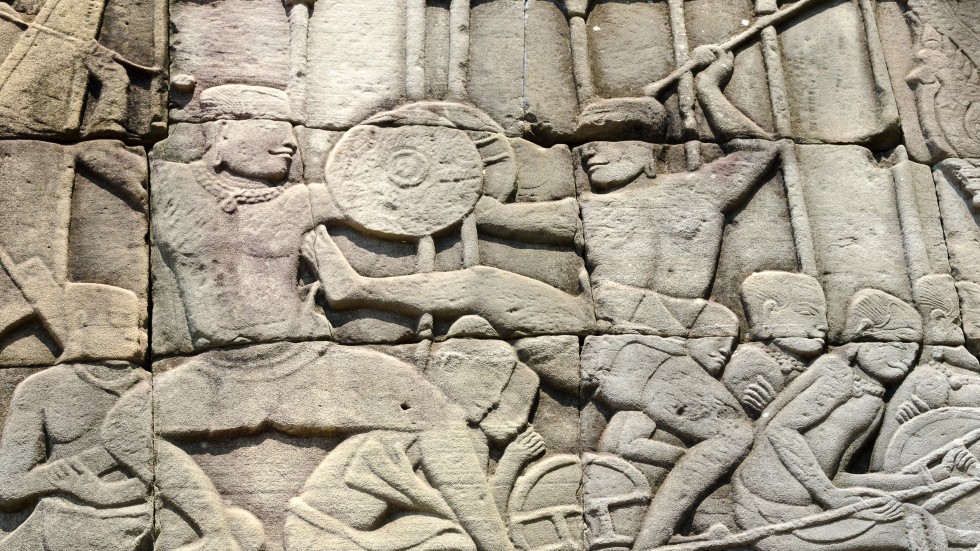Martial arts are an important and ancient part of South East Asian culture. Many South East Asian nations have their own style and tradition and compete with each other for credibility, authenticity and popularity. Cambodia is no different, and has two particularly strong traditions; Pradal Serey (also known as Kun Khmer) and Bokator , both of which have been claimed to be the “original” Southeast Asian martial art.
Let's talk about Bokator, it currently enjoys the popularity in Cambodia.
Bokator is an ancient Khmer martial art that is said to be over a thousand years old. It was created by a Khmer king in the 12th century. In the old days, it was used as a fighting technique in war. With its roots steeped deep in history — carvings of bokator fighters can be found in abundance on the walls of Angkor Wat — the martial art was crafted by Angkorian armies to help the Khmer Empire keep its grip on the region from the 9th to 15th centuries.


Believed to be the father of other Southeast Asian fighting forms, bokator is esteemed for its weapons techniques and was carved into a deadly fighting tool to help crush the empire’s invading enemies.
However, the test of time has seen bokator fade into the shadows of other martial arts, such as Cambodian kickboxing (kun Khmer) or neighbouring Thailand’s Muay Thai.
In 1995, Cambodia was keen to unite all the ASEAN nation martial arts under one name “Sovannaphum boxing” or “SEA Boxing”, representing Thailand, Cambodia, Laos and Myanmar. However, this was not accepted by other nations – especially Thailand – who were keen to preserve their unique form and name of their international sport.

And with the skills being passed down in typical Khmer fashion — orally from generation to generation — when the Pol Pot-led Khmer Rouge ruled the country from 1975 to 1979, bokator masters were targeted, along with other artists and intellects. Almost a quarter of the population was killed or perished under the communist regime.
However, bokator is now fighting back, as the few remaining masters pass on their skills to the next generation of fighters, who are taking on the task of keeping their heritage alive and kicking.
What is Bokator?
Formally referred to as lobokkatao, bokator is an ancient Cambodian martial art that was developed by Angkor as a close-quarter combat system.
The term itself translates into “pounding a lion”, with bok meaning to pound and tormeaning lion.

Unlike the combat sport of kickboxing, bokator was designed with one main purpose: to win on the battlefield. This means it includes a diverse range of knee and elbow strikes, shin kicks, submissions and ground fighting.
The knees, hands, elbows, feet, shins, head, shoulders, hip, jaw, fingers — you name it — can be used to strike an opponent into submission today, or to cause death in Angkorian times.

And it isn’t just body parts that are used in the fighting; weapons form part of it too, with bamboo sticks, spears and even the krama — a traditional Cambodian scarf — used in many of the tens of thousands of bokator moves.
There are a number of Bokator and Kun Khmer fighting schools around Cambodia – the biggest concentration existing in Phnom Penh and a few in Siem Reap. Battambang is also well-known for producing Kun Khmer champions. There are very few classes available that are aimed at tourists, as most schools exist to train the next generation of Cambodian fighting champions. However there are some that will welcome drop-ins to their classes, although be prepared for an intense physical workout, and the likelihood that few people will speak English, or a second language.
Source ;
CulturalTrip.com
Siemreap.net
Bokatorfilm.com
federationkhmersakyant.com



















